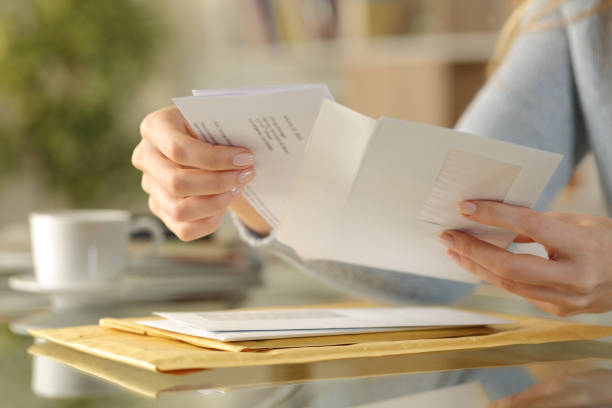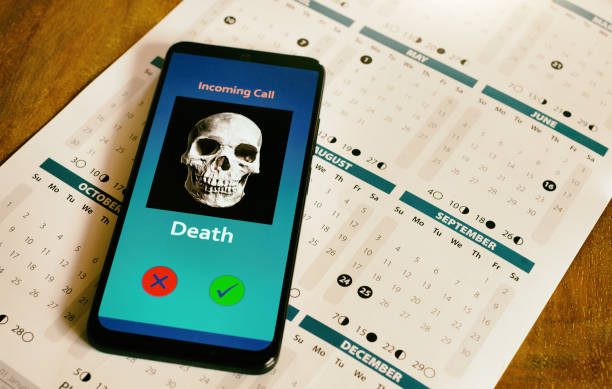How to Write an Address (06 Best Steps + Examples)
How to Write an Address
How to Write an Address: Embarking on the journey of mastering the art of addressing is akin to unraveling the intricate threads of social etiquette and communication protocols.
Whether it’s penning a formal letter, addressing an invitation, or composing an email, the way we present our addresses holds profound significance in establishing rapport, conveying respect, and fostering clarity.
In this guide, we delve into the nuances of addressing, exploring its historical evolution, cultural variations, and practical applications.
From understanding the essential components of an address to navigating special considerations and exceptions, we embark on a voyage that transcends mere correspondence, delving into the realm of social artistry.
So, let us embark on this odyssey together, where each word and gesture becomes a brushstroke in the canvas of communication, crafting a masterpiece of elegance and precision.
How to Write an Address
Here’s a step-by-step process on How to Write an Address:
Recipient’s Name
Begin by writing the recipient’s full name. This is usually the person or entity you are sending the letter or package to.
Street Address
Write the street address on the next line. Include any apartment, suite, or unit numbers if applicable.
City
Below the street address, write the name of the city where the recipient is located.
State or Province
On the next line, write the abbreviation for the state (in the United States) or the province (in other countries) where the city is located.
Postal Code
Write the postal code or ZIP code on the following line. This helps ensure accurate delivery.
Country
Finally, write the name of the country if the recipient is located in a different country than the sender.
Example of a complete address
John Doe
123 Main Street, Apt 4B
Anytown
NY 10001
United States

Understanding the Significance of Addressing
Unlocking the door to a world of social intricacies and cultural nuances, understanding the significance of addressing is akin to wielding a key to the kingdom of etiquette.
Delve into its depths, and you’ll unearth a treasure trove of historical evolution and global diversity. From the grand ballrooms of European aristocracy to the bustling streets of Asian metropolises, the manner in which we address one another weaves a rich tapestry of respect, hierarchy, and identity.
Each honorific, each title, carries the weight of tradition and the power to elevate discourse beyond mere words, offering a glimpse into the soul of a society.
So, step into this labyrinth of formalities and customs, for within its labyrinthine corridors lies the path to profound understanding and graceful interaction.
Essential Components of an Address
Like the masterful strokes of a painter crafting a masterpiece, the essential components of an address form the very foundation upon which the architecture of communication is built.
Picture a canvas awaiting the artist’s touch; in this case, the recipient details stand as the focal point, meticulously chosen to honor identity and status.
Yet, no portrait is complete without the artist’s signature, and similarly, the sender information adds credibility and authority to the discourse.
Date and location serve as the subtle brushstrokes, anchoring the communication in the temporal and spatial realms, lending it depth and resonance.
Together, these elements coalesce into a symphony of precision and clarity, each component harmonizing with the next to create a masterpiece of correspondence, worthy of admiration and reverence.
Crafting the Perfect Salutation
Crafting the perfect salutation is akin to composing a melodic overture that sets the tone for the symphony of communication to follow.
Much like a skilled conductor, one must delicately balance formality and warmth, conducting a harmonious blend of respect and familiarity.
The salutation is the handshake in the realm of written correspondence, a gesture that bridges the gap between sender and recipient with grace and finesse. It is the first impression, the opening chord that resonates through the entirety of the exchange, imprinting upon it a sense of sophistication and sincerity.
From the courtly bows of traditional correspondence to the casual nods of modern emails, each salutation is a brushstroke on the canvas of interaction, revealing not only the intentions of the sender but also their understanding of the subtle nuances of social discourse.
Body of the Address: Precision and Clarity
The body of the address is the beating heart of communication, where clarity and precision dance in an intricate choreography of words.
It is a labyrinth of thoughtfully organized information, a landscape where every sentence is a stepping stone guiding the reader through the narrative with finesse and clarity.
Like a master craftsman sculpting marble into a masterpiece, the sender must wield language with precision, chiseling away ambiguity and artifice to reveal the pure essence of their message.
Each word is a brushstroke on the canvas of understanding, painting vivid imagery and evoking emotions in the mind of the reader.
In this realm of discourse, brevity is not merely a virtue but a necessity, for it is through conciseness that the true power of communication is unleashed, leaving an indelible mark on the consciousness of the recipient.
Addressing Envelopes and Packaging
Addressing envelopes and packaging is akin to preparing a stage for a grand theatrical performance, where every detail contributes to the anticipation and excitement of the unveiling.
Imagine each envelope as a delicate treasure chest, awaiting its moment to reveal the precious cargo within. From the choice of paper stock to the elegant script adorning the surface, every aspect of the packaging exudes a sense of sophistication and anticipation.
The placement of the addresses is a delicate dance, a choreography of symmetry and grace that ensures readability and elegance. And finally, the sealing of the envelope is a moment of ceremony, a gesture that adds a final touch of elegance and mystery to the unveiling experience.
In this realm of aesthetics and functionality, every element plays a crucial role in setting the stage for the drama that is about to unfold, leaving the recipient eagerly awaiting the moment when they can finally open the envelope and behold the wonders within.

Adapting to Digital Communication
Adapting to digital communication is akin to mastering the art of a new language, where traditional etiquette meets the boundless realm of cyberspace.
In this digital age, where screens replace parchment and pixels replace ink, the rules of engagement have undergone a metamorphosis. Email etiquette becomes the new frontier, a landscape where traditional norms seamlessly merge with the demands of modernity.
Formatting considerations take center stage, where readability and professionalism are paramount in the virtual realm. Security and privacy become the guardians of the digital gates, ensuring that the sanctity of communication remains inviolable amidst the vast expanse of the internet.
In this realm of zeros and ones, mastering the nuances of digital communication is not merely an option but a necessity, a skill that empowers individuals to navigate the complexities of the modern world with confidence and finesse.
Special Considerations and Exceptions
Navigating the intricate terrain of special considerations and exceptions in addressing is akin to embarking on a captivating journey through a labyrinth of diplomatic intricacies and social protocols.
Here, one must tread with the utmost delicacy and discernment, for each situation presents its own set of nuances and sensitivities. Whether addressing diplomatic envoys or extending invitations to distinguished guests, every word and gesture carries the weight of tradition and respect.
Special occasions demand special attention, and it is in these moments that the true artistry of addressing shines brightest.
With a keen eye for detail and a deep understanding of cultural customs, one can navigate even the most delicate situations with grace and poise, ensuring that each interaction is imbued with the dignity and respect it deserves.
In this realm of exceptionality, every gesture becomes a testament to the richness of human connection and the enduring power of tradition.
Review and Polishing
In the realm of review and polishing, communication transforms into a symphony awaiting its final crescendo, where every note is scrutinized with the precision of a virtuoso.
Here, meticulous attention to detail reigns supreme as each word is polished to perfection, ensuring a masterpiece of clarity and elegance. Like a sculptor refining a masterpiece, the sender hones their message, chiseling away ambiguity and imperfection until only the essence of their intent remains.
Proofreading techniques become the brushstrokes that add depth and texture to the canvas of communication, refining it into a work of art that commands attention and admiration.
Seeking feedback becomes a ritual of refinement, a collaborative endeavor that elevates the discourse to new heights of excellence. In this realm of refinement and finesse, every iteration brings the sender closer to achieving the pinnacle of communication, leaving an indelible impression on the recipient’s mind.
Frequently Asked Questions (FAQ) about How to Write an Address
What are the essential components of an address?
The essential components of an address typically include the recipient’s details (such as name and address), the sender’s information, and the date and location of the communication.
How do I format an address on an envelope?
When formatting an address on an envelope, begin with the recipient’s name and address in the center, followed by the sender’s information in the top-left corner. Make sure to use clear and legible handwriting or printing.
Are there different addressing customs for formal and informal communications?
Yes, addressing customs vary depending on the formality of the communication. For formal letters or invitations, it’s common to use titles and honorifics, while informal emails or personal letters may use more casual salutations.
What should I consider when addressing international correspondence?
When addressing international correspondence, it’s important to research and adhere to the addressing customs of the recipient’s country. This may include variations in address format, title usage, and cultural sensitivities.
How do I handle special considerations, such as addressing invitations or diplomatic communications?
Special considerations, such as addressing invitations or diplomatic communications, require careful attention to detail and adherence to protocol. This may involve using specific titles, honorifics, or addressing conventions depending on the occasion and context.
What are some common mistakes to avoid when writing an address?
Common mistakes to avoid when writing an address include misspelling the recipient’s name or address, omitting important details such as apartment numbers or postal codes, and using inappropriate or outdated salutations.
How can I ensure the privacy and security of digital addresses?
To ensure the privacy and security of digital addresses, it’s important to use secure communication channels, such as encrypted email services, and to avoid sharing sensitive information in public or unsecured forums. Additionally, regularly updating passwords and using two-factor authentication can help protect against unauthorized access.
Conclusion
In conclusion of How to Write an Address, mastering the art of writing an address is more than just a practical skill—it is a journey of cultural understanding, social finesse, and communication mastery.
From the careful selection of recipient details to the thoughtful arrangement of salutations and the precise formatting of envelopes, every aspect of addressing reflects our respect for tradition, our attention to detail, and our commitment to clarity and elegance in communication.
Whether penning a formal letter, addressing an invitation, or sending a digital message, the way we present our addresses speaks volumes about our professionalism, our courtesy, and our ability to navigate the complexities of human interaction.
So, let us continue to hone our skills, to refine our craft, and to embrace the power of the written address as a tool for connection, expression, and understanding in an ever-evolving world.






